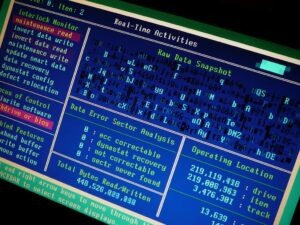
In today’s increasingly globalized and digitally connected world, remote work has transitioned from a niche practice to a mainstream business model. As organizations continue to embrace remote work, effective management of remote teams has become a critical aspect of organizational success. The tools and technologies available for managing remote teams are vast and continually evolving, enabling teams to maintain productivity, foster collaboration, and ensure effective communication regardless of physical distances.
Communication Tools Remote Teams
Effective communication is the cornerstone of successful remote team management. Various communication tools help bridge the gap created by physical distance, ensuring that team members can interact seamlessly.
Video Conferencing
Video conferencing tools such as Zoom, Microsoft Teams, and Google Meet have become indispensable for remote teams. These platforms offer high-quality video and audio communication, enabling virtual face-to-face meetings that foster a sense of connection and engagement among team members. Features like screen sharing, virtual backgrounds, and breakout rooms enhance the functionality of these tools, making them suitable for a wide range of meeting types, from casual check-ins to formal presentations.
Instant Messaging
Instant messaging platforms like Slack, Microsoft Teams, and WhatsApp provide real-time communication channels for remote teams. These tools facilitate quick exchanges of information, reducing the need for lengthy email threads and allowing team members to resolve issues promptly. Channels and groups within these platforms help organize conversations by topics or projects, ensuring that discussions remain focused and relevant.
Despite the rise of instant messaging and video conferencing, email remains a fundamental communication tool. Tools like Microsoft Outlook, Gmail, and Thunderbird continue to be essential for formal communication, detailed discussions, and sharing of important documents. Email’s asynchronous nature makes it suitable for remote teams operating across different time zones, allowing team members to respond at their convenience.
Collaboration Tools
Collaboration tools are vital for remote teams to work together efficiently on projects, share documents, and manage tasks.
Project Management
Project management tools such as Trello, Asana, and Monday.com provide a centralized platform for planning, tracking, and managing projects. These tools offer features like task assignments, deadlines, progress tracking, and project timelines, ensuring that everyone on the team is aligned and aware of their responsibilities. Integrations with other tools, such as calendar apps and communication platforms, further enhance their utility.
Document Sharing and Collaboration
Tools like Google Workspace (formerly G Suite) and Microsoft Office 365 enable remote teams to create, share, and collaboratively edit documents, spreadsheets, and presentations in real time. These platforms support version control, commenting, and simultaneous editing, making it easy for team members to work together on shared documents without the confusion of multiple versions.
Cloud Storage
Cloud storage solutions like Dropbox, Google Drive, and OneDrive provide secure and accessible storage for files and documents. These tools ensure that team members can access important files from anywhere, at any time, and collaborate on them without the limitations of local storage. Features like file sharing, access permissions, and backup ensure that data remains secure and easily retrievable.
Time Management and Productivity Tools
Managing time and maintaining productivity is crucial for remote teams, especially when team members are dispersed across different time zones.
Time Tracking
Time tracking tools such as Toggl, Clockify, and Harvest help remote teams monitor how much time is spent on various tasks and projects. These tools provide insights into productivity patterns, helping managers identify areas for improvement and ensuring that team members are not overburdened. Detailed reports generated by these tools can also assist in project billing and resource allocation.
Productivity Management
Productivity management tools like Todoist, RescueTime, and Focus@Will help individuals and teams stay focused and organized. These tools offer features like to-do lists, task prioritization, and productivity analytics, enabling team members to manage their workloads effectively. Some tools also provide focus-enhancing features, such as background music and distraction blockers, to help maintain concentration.
Virtual Team Building Tools
Building and maintaining a strong team culture is challenging in a remote setting. Virtual team-building tools help create a sense of community and camaraderie among remote team members.
Virtual Team Activities
Platforms like Donut, TeamBuilding.com, and Kahoot! offer virtual team-building activities that promote interaction and engagement. These activities range from virtual coffee chats and icebreaker games to team trivia and online escape rooms, providing fun and interactive ways for team members to connect and build relationships.
Recognition and Rewards
Recognition and reward tools like Bonusly and Kudos allow managers and team members to acknowledge and appreciate each other’s contributions. These platforms facilitate the distribution of virtual rewards and public recognition, boosting morale and fostering a positive team environment.
Security and Compliance Tools
Ensuring the security of data and compliance with regulatory standards is paramount for remote teams, especially when dealing with sensitive information.
Virtual Private Networks (VPNs)
VPNs like NordVPN, ExpressVPN, and Cisco AnyConnect provide secure and encrypted connections for remote team members accessing company resources. VPNs protect data from interception and ensure secure communication over public or untrusted networks, safeguarding the organization’s information.
Data Encryption
Data encryption tools such as BitLocker, VeraCrypt, and AxCrypt protect sensitive information stored on devices and transmitted over networks. These tools ensure that data remains confidential and is only accessible to authorized individuals, reducing the risk of data breaches and unauthorized access.
Compliance Management
Compliance management tools like Vanta, Drata, and OneTrust help organizations ensure that their remote operations adhere to industry regulations and standards. These tools provide features for tracking compliance requirements, conducting audits, and managing risk, helping organizations maintain regulatory compliance and avoid potential legal issues.
Conclusion
The successful management of remote teams hinges on the effective use of a diverse array of tools and technologies. From communication and collaboration to time management, team building, and security, these tools provide the necessary infrastructure for remote teams to function seamlessly and efficiently. As remote work continues to evolve, staying abreast of the latest tools and best practices will be crucial for organizations aiming to maintain productivity, foster a positive team culture, and ensure the security and compliance of their operations.



